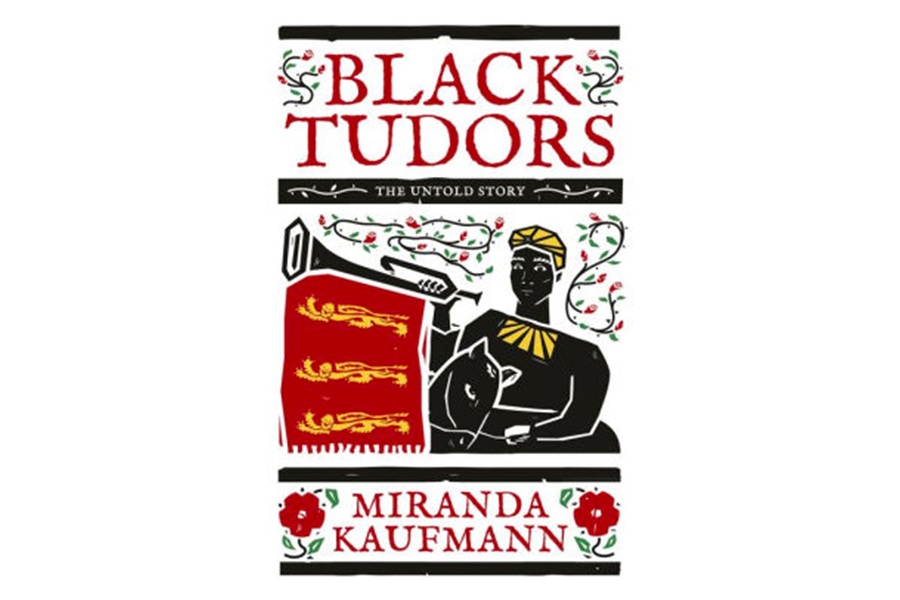'Black Tudors' reveals a surprising and overlooked chapter of history
Loading...
The England of the Tudor era captures our imaginations like almost no other time in history. The king with his six wives, the queen with her zero husbands, the beheadings, conspiracies, and romance. And oh, yes, the bearded Bard with his mighty pen.
But there’s something missing: black people. They seem to not exist outside of a stagebound character named Othello.
But look closer – specifically at a spectacular almost-60-foot-long illustrated manuscript. It depicts the 1511 royal jousting tournament celebrating the birth of a son to King Henry VIII, the multimarried monarch.
Twice you’ll see six trumpeters on horses with colorful coats of arms hanging from their instruments. Five look like twins, their heads bare and their cheeks puffed out. But the sixth is clearly a black man, with eyes wide and a turban atop his head.
He is in service to the king, but he is most definitely not a slave. As we learn, he asks Henry for a raise though an intermediary – not the act of someone in bondage.
As it turns out, this musician – his name is John Blanke – had plenty of company. Hidden in British archives and parish records are the identities of dozens of black people who lived in England during Tudor times.
These men and women are more than mere historical curiosities, as University of London historian Miranda Kaufmann reveals in her thought-provoking new book, Black Tudors: The Untold Story. Many appear to have been respected members of English society, not “powerless, enslaved victims.”
As a result, Kauffman believes, racism and prejudice weren’t as prevalent in England as we might assume from our modern, holier-than-thou perspective.
But wait, weren’t the English a crucial cog in the world’s slave trade? Yes, but English society didn’t just consider race when it decided where people belonged on the ladder of life from top rung to bottom – the “Great Chain of Being,” as it was called.
Class mattered. And so did savvy and skill, which explains why the 10 people profiled in “Black Tudors” could move up in the world to entertain the king, navigate the high seas with Sir Francis Drake, and dive into the ocean to salvage sunken ships. One man even became “the first African man in English history to whip a white man.”
Yes, a convoluted series of events ended with a black servant named Edward Swarthye whipping a white servant at the command of a justice of the peace. It’s hardly an event you’d expect in a society that always put white above black. For all its brutality, Tudor England was not that.
Kauffman is at a disadvantage because little was written about black Tudors, and even less was said by them and preserved. She does let her imagination go a bit awry with brief fictionalized scenes about the men and women she profiles.
But she’s on sturdy ground when she takes the readers on fascinating excursions through Moroccan history, the European exploration of South America, and the seedier side of London.
Tantalizing mysteries about black Tudors remain. The turban-wearing trumpeter John Blanke, whose last name may be a joke on the French word blanc (white), was baptized as a Christian and got married. We know King Henry VIII paid for his outfit, but it’s not clear if Blanke really wanted to convert from his assumed Muslim heritage.
Nor does anyone know if he married an Englishwoman. It does seem probable, however, and perhaps it wasn’t nearly as scandalous a union as we’d expect it to have been back then or, say, in the mid-20th-century United States.
Then there’s the single black woman known as Cattelena of Almondsbury, who left a cow, clothes, and dishes behind. How did she manage to live on her own? And which aristocratic swells wore the luxury clothes created by the silk weaver called Reasonable Blackman? (Dickens has nothing on these fantastic names.)
And what should we make of the well-dressed black prostitute named Anne Cobbie, described at the time as a “tawny Moor” with soft skin? We learn that men appreciated her exoticism, but any thoughts she might have had – whether of exploitation or empowerment – are lost to time.
Kauffman makes a good case that, for all their faults, Englishmen and Englishwomen weren’t (and aren’t) natural-born racists. “Slavery,” she writes, “was not an inevitable result of the Anglo-African encounter.”
Whatever the case, many English people carry the legacy of the Tudor era in their blood. As Kauffman notes, today’s DNA tests are revealing that some contemporary white English people have black ancestors dating to the 16th and 17th centuries.
Who knows? More than five centuries after King Henry VIII threw a party to remember, perhaps a descendant of a certain trumpeter now plays music for the queen.
Randy Dotinga regularly reviews books for The Christian Science Monitor.








